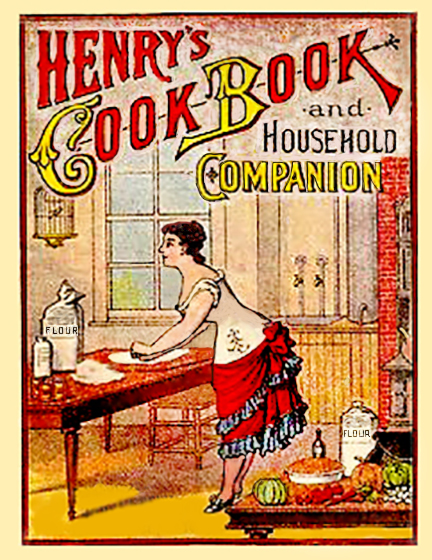Cookbook
(Redirected from Cookbooks)
A cookbook is a kitchen reference publication containing a collection of recipes, typically organized by type of dish. Modern versions may also include colorful illustrations and advice on purchasing quality ingredients or making substitutions. Cookbooks can be general, or may specialize in a particular cuisine or category of food.
History[edit | edit source]
The history of cookbooks dates back to ancient times when recipes were often shared orally. The earliest documented cookbooks appeared with the invention of writing, with surviving examples from ancient Mesopotamia and Rome.
Purpose[edit | edit source]
Cookbooks serve several purposes; they are a valuable resource for:
- Learning to cook
- Mastering new cooking techniques
- Exploring different cuisines
- Understanding food science
- Entertaining and creating meals for special occasions
Types of Cookbooks[edit | edit source]
- General Cookbooks: Provide a wide range of recipes for everyday meals.
- Specialty Cookbooks: Focus on specific categories like vegetarian, desserts, or grilling.
- Ethnic Cookbooks: Explore the culinary traditions and recipes of a particular region or culture.
- Celebrity Chef Cookbooks: Often tie-in with a TV show or famous restaurant.
- Historical Cookbooks: Offer insights into cooking methods and ingredients from a historical perspective.
Components of a Cookbook[edit | edit source]
- Introduction: May provide background on the recipes' origins, the author's philosophy, or the book's theme.
- Table of Contents: Organizes the recipes into chapters and sections.
- Recipes: The heart of the cookbook, which includes the list of ingredients, step-by-step cooking instructions, serving size, and nutritional information.
- Glossary: Explains cooking terms and ingredients that may be unfamiliar to the reader.
- Index: A list of recipes, ingredients, and topics in alphabetical order, allowing the reader to quickly find information.
- Photographs/Illustrations: Visual representations of dishes that can serve as a plating guide.
Recipe Structure[edit | edit source]
A well-written recipe in a cookbook generally includes:
- Title of the Dish: Provides the name of the recipe.
- Headnote: A brief description or background story about the dish.
- Ingredients List: Details the quantities and types of ingredients needed.
- Preparation Instructions: Step-by-step guide on how to make the dish.
- Cooking Time and Temperature: Specifies how long and at what temperature to cook the dish.
- Serving Suggestion: Recommendations on how to serve and garnish the dish.
The Role of Cookbooks in Culture[edit | edit source]
Cookbooks go beyond mere collections of recipes; they can reflect cultural and societal changes, showcasing the evolving trends in food and eating habits. They often tell a story about the times and places from which they originate, making them documents of social history as well as culinary art.
Glossary of Cookbook Terms[edit | edit source]
- Al Dente: Pasta cooked until it is still firm when bitten.
- Baste: To moisten food for added flavor and to prevent drying out while cooking.
- Dice: To cut food into small cubes.
- Fold: To incorporate a delicate substance, such as whipped cream or beaten egg whites, into a thicker mixture without releasing air bubbles.
- Julienne: To cut food into thin, match-like strips.
- Knead: To work dough by pressing it with the heels of the hands, folding it, turning it, and repeating each motion until the dough is smooth and elastic.
- Marinate: To soak food in a flavorful liquid for a period of time to infuse flavor and often to tenderize.
- Poach: To cook food gently in liquid just below the boiling point.
- Reduce: To boil a liquid, decreasing its volume as it thickens and intensifies in flavor.
- Sauté: To cook food quickly in a minimal amount of fat over relatively high heat.
- Simmer: To cook liquid just below the boiling point; bubbles form but do not burst on the surface of the liquid.
- Whisk: To beat ingredients together with a whisk, incorporating air to make them light and fluffy.
- Zest: The colored part of the peel of citrus fruit, used as flavoring.
- Portal:Food | Glossary of healthy eating | UK Foods | US Foods | Dietary Supplements | Nutrition values of foods
- Encyclopedia of nutrition | Calorie Finder | Nutrition Database | Glycemic Index of Foods | Protein rich foods list
- Lists of food & drink articles
Search WikiMD
Ad.Tired of being Overweight? Try W8MD's physician weight loss program.
Semaglutide (Ozempic / Wegovy and Tirzepatide (Mounjaro / Zepbound) available.
Advertise on WikiMD
|
WikiMD's Wellness Encyclopedia |
| Let Food Be Thy Medicine Medicine Thy Food - Hippocrates |
Translate this page: - East Asian
中文,
日本,
한국어,
South Asian
हिन्दी,
தமிழ்,
తెలుగు,
Urdu,
ಕನ್ನಡ,
Southeast Asian
Indonesian,
Vietnamese,
Thai,
မြန်မာဘာသာ,
বাংলা
European
español,
Deutsch,
français,
Greek,
português do Brasil,
polski,
română,
русский,
Nederlands,
norsk,
svenska,
suomi,
Italian
Middle Eastern & African
عربى,
Turkish,
Persian,
Hebrew,
Afrikaans,
isiZulu,
Kiswahili,
Other
Bulgarian,
Hungarian,
Czech,
Swedish,
മലയാളം,
मराठी,
ਪੰਜਾਬੀ,
ગુજરાતી,
Portuguese,
Ukrainian
Medical Disclaimer: WikiMD is not a substitute for professional medical advice. The information on WikiMD is provided as an information resource only, may be incorrect, outdated or misleading, and is not to be used or relied on for any diagnostic or treatment purposes. Please consult your health care provider before making any healthcare decisions or for guidance about a specific medical condition. WikiMD expressly disclaims responsibility, and shall have no liability, for any damages, loss, injury, or liability whatsoever suffered as a result of your reliance on the information contained in this site. By visiting this site you agree to the foregoing terms and conditions, which may from time to time be changed or supplemented by WikiMD. If you do not agree to the foregoing terms and conditions, you should not enter or use this site. See full disclaimer.
Credits:Most images are courtesy of Wikimedia commons, and templates, categories Wikipedia, licensed under CC BY SA or similar.
Contributors: Prab R. Tumpati, MD





